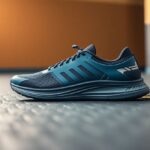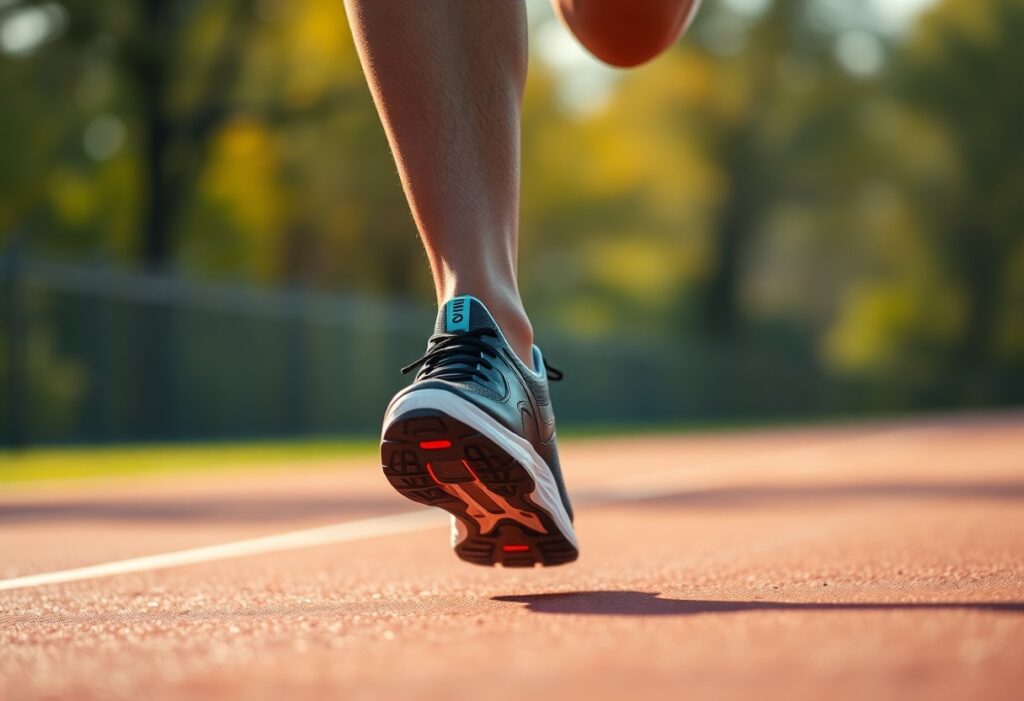
Explore the groundbreaking advancements in running footwear technology that have transformed the performance landscape for endurance athletes, opening new pathways for improvement and success.
The enhancement of performance in endurance running has experienced a significant evolution, largely attributed to the emergence of advanced footwear technology. This innovative leap offers athletes unparalleled opportunities to realise their maximum capabilities. You will discover how cutting-edge shoe designs can dramatically reduce your metabolic expenditure and improve your running economy. By integrating carbon fibre plates and revolutionary midsole materials, these shoes are crafted to provide remarkable energy return mechanisms that could lower your oxygen consumption by an impressive 4%. Whether you are an experienced professional or a passionate amateur, understanding these biomechanical advancements can empower you to make informed decisions about your running gear and potentially improve your race times.
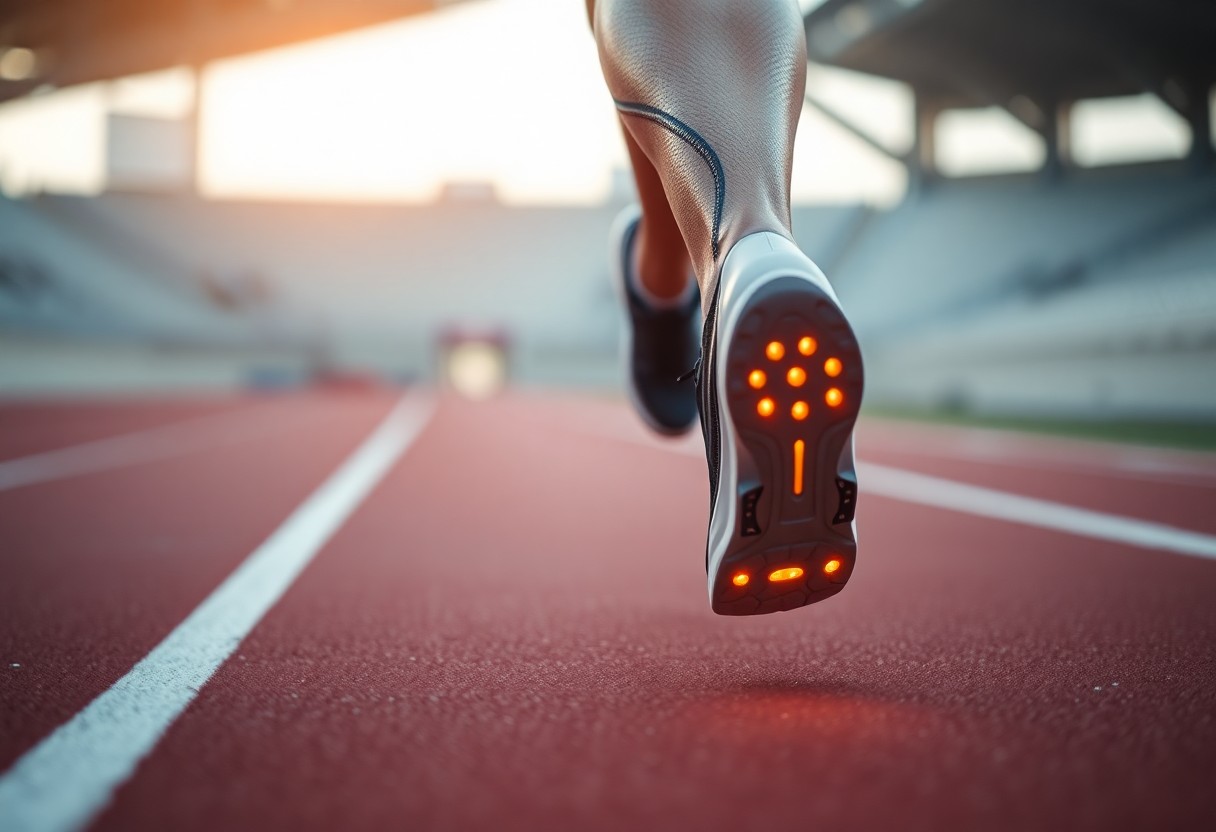 Continue your reading journey to uncover deeper insights into the mechanics of running footwear that promise to elevate your performance:
Continue your reading journey to uncover deeper insights into the mechanics of running footwear that promise to elevate your performance:
Understanding Energy Return Mechanisms in Cutting-Edge Running Footwear
The latest innovations in running shoe technology harness complex biomechanical principles to optimise energy transfer throughout movement. Innovative design features are meticulously engineered to work in synergy, effectively minimising metabolic expenditure and creating a sophisticated system that enhances running efficiency through strategic material selection and geometric configurations. By focusing on the mechanics of energy return, these shoes offer runners a distinct advantage in both performance and stamina, enabling longer running sessions with significantly reduced fatigue.
Exploring the Dynamics of Curvature in Carbon Fibre Plates
Carbon fibre plates are designed with precise geometric engineering to efficiently redirect kinetic energy throughout the running cycle. Optimal curvature angles ranging from 12° to 15° are established to maximise energy storage and return, with finite element modelling revealing energy return efficiencies reaching as high as 93% in prototype designs. These carefully crafted plates create a spring-like mechanism that diminishes muscular effort during toe-off phases, allowing runners to conserve energy over longer distances, which in turn enhances both endurance and overall performance.
Comparing TPU and EVA in Advances in Midsole Technology
The choice of materials is crucial in determining shoe performance, with thermoplastic polyurethane (TPU) emerging as a leading contender in midsole technology. Comparative studies illustrate TPU's substantial advantages in energy return and impact absorption, providing runners with enhanced biomechanical efficiency across various running environments. The choice between TPU and EVA foam is vital for athletes aiming to improve their performance while reducing the likelihood of injuries during both training and competitive events.
| Energy Return | 18% higher in TPU |
| Reduction in Oxygen Consumption | 2.4% lower with TPU |
A comprehensive analysis of midsole materials uncovers nuanced performance traits. TPU demonstrates superior resilience when compared to traditional EVA foam, maintaining consistent mechanical properties through thousands of compression cycles. Runners experience increased reliability in energy return, decreased fatigue levels, and enhanced long-distance performance through advancements in material science, which can greatly affect their overall training outcomes and competitive performances.
| Impact Absorption | TPU absorbs 37% more force |
| Rebound Elasticity | 89% maintained across 50,000 cycles |
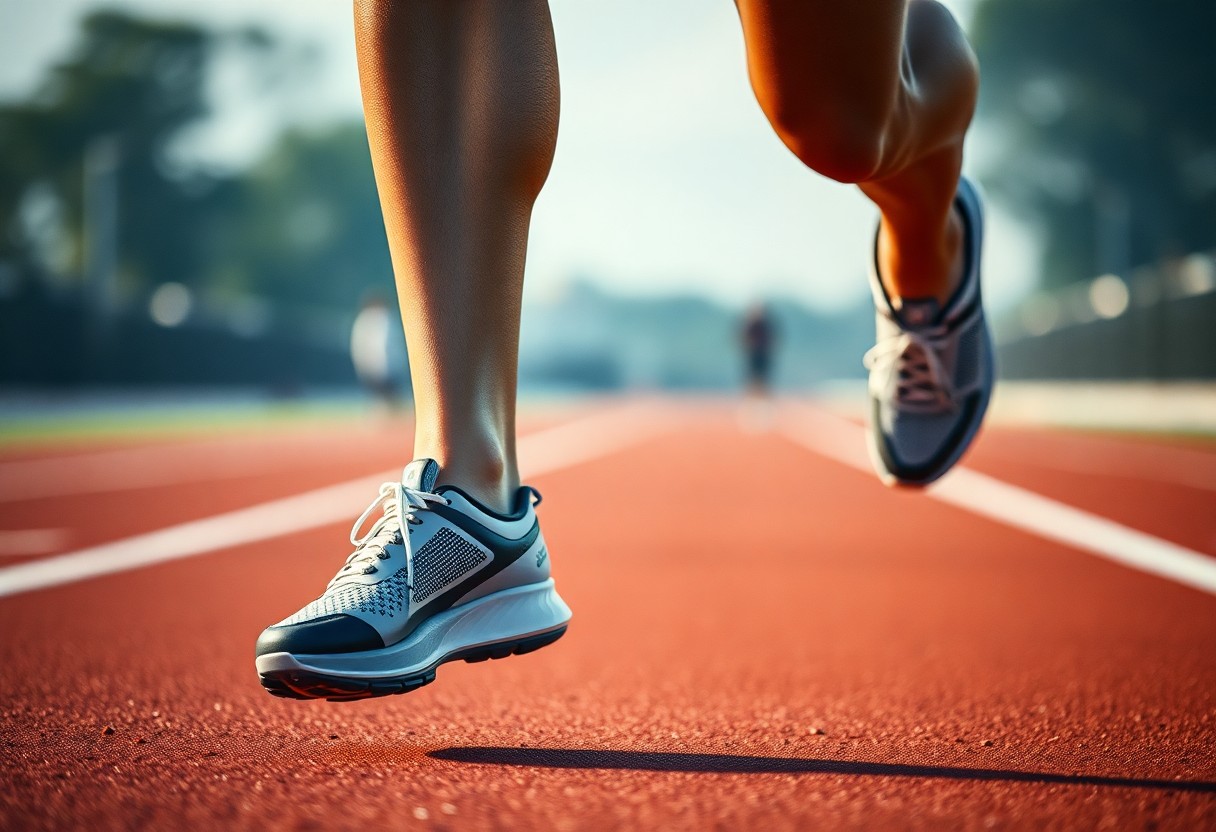 Dive deeper as we explore the implications of advanced footwear technology on metabolic efficiency:
Dive deeper as we explore the implications of advanced footwear technology on metabolic efficiency:
Assessing Metabolic Efficiency: Understanding Who Benefits Most from Advanced Footwear
Advanced footwear technology does not provide uniform benefits across all runners. Improvements in metabolic efficiency differ significantly among various demographic groups, with factors such as gender, age, and individual biomechanics all playing critical roles in performance enhancement. Research has uncovered complex patterns of metabolic responses, revealing that the advantages of super shoes extend beyond mere performance metrics to include intricate physiological adaptations tailored to each runner’s unique biomechanical profile.
Examining Gender-Specific Enhancements in Athletic Performance
Female runners exhibit a 3.2% increase in metabolic power, compared to 4.2% for males, highlighting sophisticated neuromuscular adaptations. Research into pelvic kinematics indicates a 14% decrease in hip adduction angle in females when wearing advanced footwear, which may explain the subtle differences in metabolic gains observed between genders. Acknowledging these distinctions can assist in tailoring training programmes and footwear choices to optimise performance benefits for each gender.
Investigating Age-Related Benefits in Endurance Performance
Masters athletes aged 40 and above show a 2.8% greater reduction in oxygen cost when utilising super shoes, compensating for declines in tendon elasticity. Tibial loading assessments reveal a 12% cumulative stress reduction per kilometre for older runners, suggesting potential advantages in injury prevention and sustaining performance. These findings highlight the importance of advanced footwear technology in extending the competitive lifespan of older athletes.
The benefits of advanced footwear technology concerning age extend significantly beyond basic performance metrics. Biomechanical studies indicate that older runners experience more substantial adaptations due to compensatory mechanisms. Reduced tendon stiffness and modified muscle recruitment patterns interact with the technology to create a unique performance enhancement profile. Specifically, the energy return mechanism of the carbon plate appears to offset age-related biomechanical inefficiencies, potentially prolonging competitive running careers by alleviating the physiological challenges that typically accompany aging.
Continue your exploration to learn more about the impact of advanced footwear technology on injury risks:
Understanding How Running Footwear Affects Injury Risk
Advanced footwear technology presents intricate biomechanical interactions that require careful examination regarding potential injury risks. Runners must thoughtfully assess the balance between performance enhancement and physiological adaptation. Longitudinal studies indicate subtle yet significant shifts in muscular recruitment patterns, joint loading, and proprioceptive feedback when transitioning to high-performance running shoes, highlighting the necessity for a holistic approach to training and recovery.
Injury Analysis: The Consequences of Enhanced Performance
Biomechanical research indicates a 9% increase in strain rates on the Achilles tendon among users of super shoes during intense training. Plantar pressure mapping reveals a 22% increase in forefoot loading compared to conventional trainers, particularly on challenging surfaces like downhill running. These insights suggest that while metabolic efficiency improves, runners must incorporate targeted strength training and adaptation protocols to mitigate potential injuries and ensure long-term athletic health.
Adjusting Training Protocols to Achieve Optimal Gait Adaptations
Your biomechanical response to advanced footwear necessitates strategic modifications to your training regimen. Gait retraining is crucial for optimising the unique energy return mechanisms inherent in carbon-plated shoes. Runners should focus on developing neuromuscular patterns that align with the shoe’s biomechanical design, reducing injury risks while maximising performance advantages.
Comprehensive gait adaptation strategies involve multifaceted methods to effectively incorporate advanced footwear technology. Biomechanical analysis suggests a need for approximately 6-8 weeks of progressive training to fully adjust to the distinct mechanical properties of super shoes. This adaptation period should include targeted eccentric strengthening routines, modified interval training strategies, and careful observation of lower limb biomechanics. Both professional athletes and committed runners can gain from periodic 3D gait analysis to monitor subtle variations in movement patterns, ensuring optimal integration of advanced footwear technology with individual biomechanical characteristics.
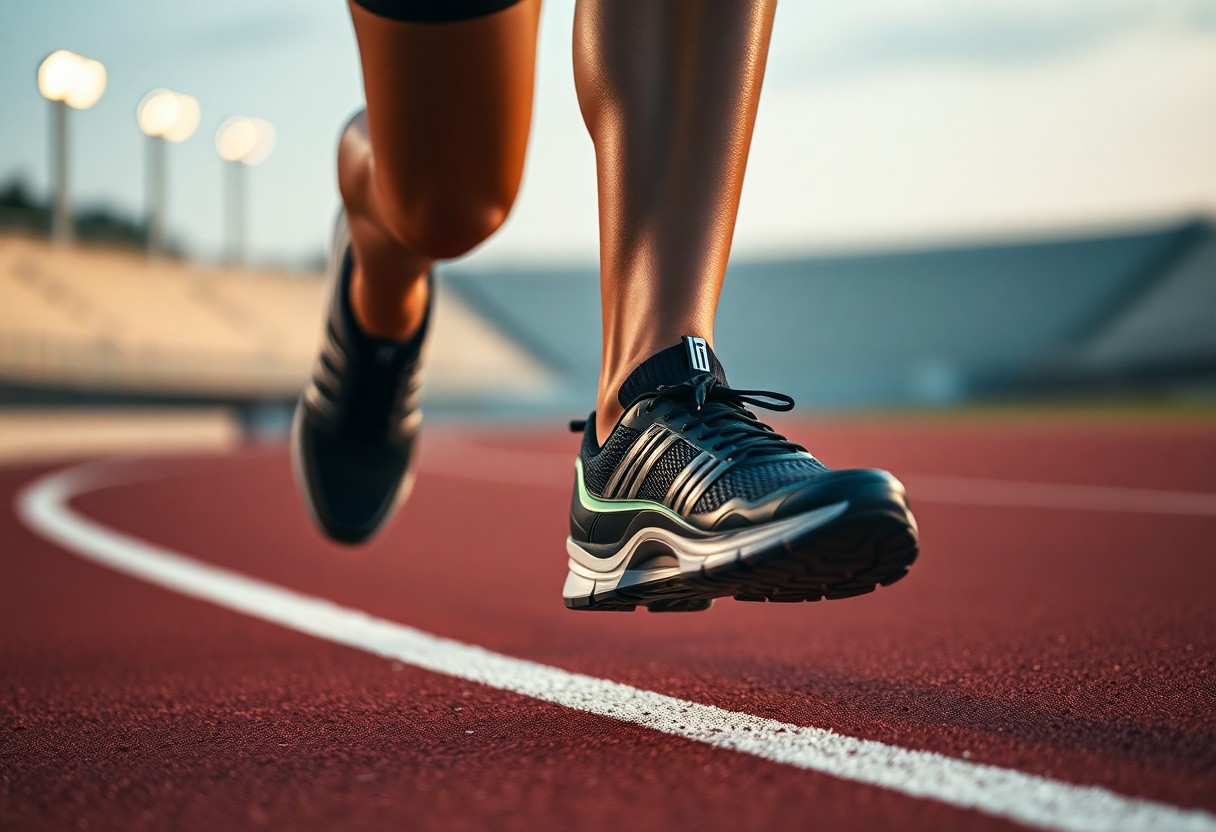 Look into the future of footwear technology and its implications for runners:
Look into the future of footwear technology and its implications for runners:
Envisioning Future Advancements in Running Footwear Technology
New technologies are poised to revolutionise running shoe design, expanding the frontiers of biomechanical efficiency and performance optimisation. Innovative research is concentrating on personalised solutions that adapt to individual biomechanics, utilising advanced materials, computational modelling, and integrated sensor technologies to create a new generation of intelligent footwear designed specifically for elite athletes.
Revolutionising Footwear Design with 3D Printed Midsoles
Lattice structure optimisation algorithms now enable precise regional stiffness variations that correspond with individual foot pressure maps. Prototype testing indicates a 5.1% increase in metabolic savings compared to mass-produced models, with computational design offering unprecedented customisation of midsole geometries to maximise energy return while minimising biomechanical stress. This innovative approach ensures that each runner can achieve optimal performance tailored to their unique physical characteristics.
Incorporating Smart Technology for Enhanced Performance Monitoring
Groundbreaking sensor technologies are transforming running shoes into sophisticated performance tracking devices. Real-time ground reaction force feedback systems can reduce oxygen costs by 1.9% through micro-adjustments in cadence, providing runners with immediate biomechanical insights during training and races. These innovations are essential for athletes aiming to refine their techniques and improve performance metrics.
Advanced sensor integration signifies a substantial advancement in performance monitoring technology. Multi-axis accelerometers, pressure-sensitive matrices, and embedded microprocessors can now capture complex biomechanical data with unparalleled accuracy. These smart systems analyse gait mechanics, impact forces, and energy expenditure in real-time, offering runners detailed insights into their movement patterns. Machine learning algorithms can predict potential injury risks, optimise training loads, and recommend personalised technique adjustments based on extensive movement analysis, effectively transforming running shoes from passive gear into active performance optimisation instruments.
Finally, gain a thorough understanding of the transformative landscape of advanced footwear technology in endurance running:
Embracing the Future of Advanced Footwear Technology
In summary, you have examined the transformative landscape of advanced footwear technology in endurance running. Your knowledge now encompasses how innovative design elements such as carbon plates and high-performance midsole materials can substantially decrease metabolic costs while enhancing running efficiency. By leveraging scientific discoveries, you can appreciate that these shoes offer more than just marginal improvements—they represent a significant shift in athletic performance. Your investment in such technology could lead to enhanced running economy, reduced energy expenditure, and optimised biomechanical responses across various athletic populations.
The Article Biomechanical Efficiency of Advanced Footwear Technology: Metabolic Cost Reduction and Performance Enhancement in Endurance Running appeared first on My Shoes Finder.
The Article Biomechanical Efficiency in Advanced Footwear for Runners Was Found On https://limitsofstrategy.com
The Article Biomechanical Efficiency: Advanced Footwear for Runners found first on https://electroquench.com


